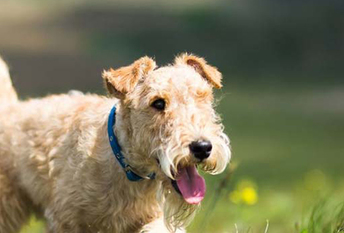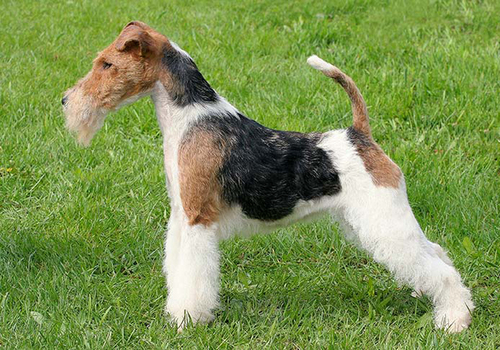The Wire Fox Terrier's coat requires stripping in order to maintain the proper look and texture. Stripping can be done at home, or at the groomer, and should be done at least twice per year. If a dog is not competing, his coat can be clipped, however, this changes the texture of the coat, making it soft and also alters the coloring of the dog.
Check the ears on a weekly basis for signs of infection, irritation, or wax build up. Cleanse regularly with a veterinarian-approved cleanser and cotton ball. Brush the teeth at least once per week to prevent tartar buildup and fight gum disease. Additionally, nails should be trimmed once per month if the dog does not wear the toenails down naturally.
It’s no surprise that the Wire Fox Terrier likes to be outdoors, since it was bred for hunting and tracking. An active and lively breed, the Wire Fox Terrier can be exercised indoors and out, but it does help to have a fenced yard so it can run and play outside. You shouldn’t leave them outside on its own, as this dog is known to bark and dig excessively.
The Wire Fox Terrier likes to go on long walks, but be sure to keep your dog on a leash at all times, as its hunting instincts will kick in and it will chase any small animals.
Since the Wire Fox Terrier needs consistent training, it’s a good idea to enroll your dog in an obedience training class. As well, there are clubs available for Wire Fox Terriers where it can indulge in its love of chasing small vermin without actually harming smaller animals.
Wire Fox Terriers are known to be grazers, so it will eat its food throughout the day. High-quality dry dog food is best, as it won’t go bad if left for long periods of time. Feel free to add fresh vegetables to your dog’s diet.
Any diet should be appropriate to the dog’s age (puppy, adult, or senior). Some dogs are prone to gettingoverweight, so watch your dog’s calorie consumption and weight level.
Treatscan be an important aid in training, but giving too many can cause obesity. Learn about whichhuman foodsare safe for dogs, and which are not. Check with your vet if you have any concerns about your dog’s weight or diet.Clean, fresh water should be available at all times.
The average life span of the Wire Fox Terrier is 12 to 15 years. Breed health concerns may includecataracts, congenital deafness, distichiasis, pulmonic stenosis, insulinoma,glaucoma,Legg-Calve-Perthes disease, shoulder luxation,mast cell tumors, cerebellar malformation, epilepsy,corneal ulceration, lens luxation,progressive retinal atrophy, ectopic ureters, congenital idiopathic megaesophagus andskin allergies.
Training the Wire Fox Terrier can prove to be a bit difficult, especially if this is your first time owning this breed. If you’re bringing this dog home as a puppy, watch out for its sharp teeth.
As well, the Wire Fox Terrier can be difficult to house train. In the beginning, you should consider staying at home with your dog as much as possible. Socialization is important, so introduce your Wire Fox Terrier to different dogs, people and environments whenever you can.
Since this dog is intelligent, you should include obedience tasks as part of your Wire Fox Terrier’s training. It can have a stubborn and independent nature, so be sure to be firm when giving commands. Reprimand your dog in a firm manner when it exhibits bad behavior.
If this is your first time owning this breed or lack faith in your training skills, don’t be afraid to hire an experienced handler.












